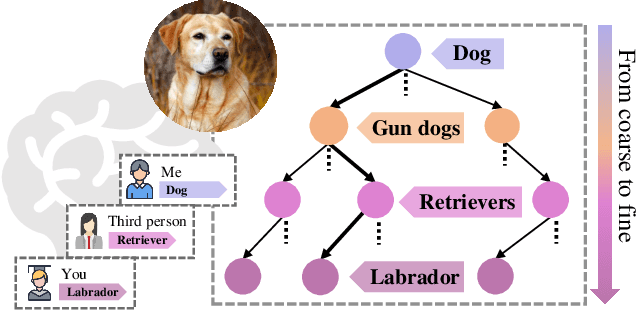Your "Labrador" is My "Dog": Fine-Grained, or Not
Paper and Code
Nov 18, 2020



Whether what you see in Figure 1 is a "labrador" or a "dog", is the question we ask in this paper. While fine-grained visual classification (FGVC) strives to arrive at the former, for the majority of us non-experts just "dog" would probably suffice. The real question is therefore -- how can we tailor for different fine-grained definitions under divergent levels of expertise. For that, we re-envisage the traditional setting of FGVC, from single-label classification, to that of top-down traversal of a pre-defined coarse-to-fine label hierarchy -- so that our answer becomes "dog"-->"gun dog"-->"retriever"-->"labrador". To approach this new problem, we first conduct a comprehensive human study where we confirm that most participants prefer multi-granularity labels, regardless whether they consider themselves experts. We then discover the key intuition that: coarse-level label prediction exacerbates fine-grained feature learning, yet fine-level feature betters the learning of coarse-level classifier. This discovery enables us to design a very simple albeit surprisingly effective solution to our new problem, where we (i) leverage level-specific classification heads to disentangle coarse-level features with fine-grained ones, and (ii) allow finer-grained features to participate in coarser-grained label predictions, which in turn helps with better disentanglement. Experiments show that our method achieves superior performance in the new FGVC setting, and performs better than state-of-the-art on traditional single-label FGVC problem as well. Thanks to its simplicity, our method can be easily implemented on top of any existing FGVC frameworks and is parameter-free.
 Add to Chrome
Add to Chrome Add to Firefox
Add to Firefox Add to Edge
Add to Edge